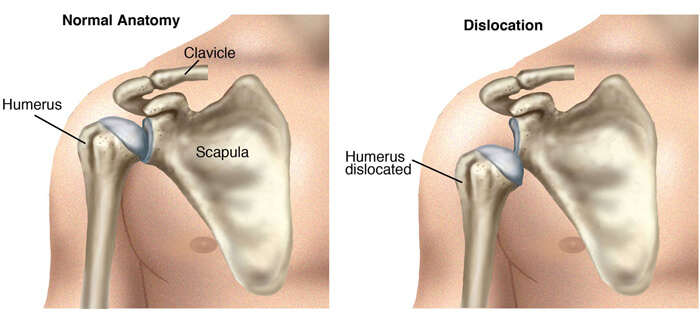
A shoulder joint is said to be dislocated when the bone Humerus is separated from the Scapula at the Glenohumeral joint. It would be quite fair to say that the shoulder joint is particularly prone to dislocation, for it is the flip-side, or call it the ‘pay’ for this wide range of motion that this ball and socket joint has to offer. In its nature, the shoulder joint isn’t a simple one at all; it involves more than just the joining of two bones with the inclusion of tendons and non-bony parts as well. The partial dislocation of the shoulder is called Subluxation.
3 Types of Dislocations
Shoulder dislocations can be classified into 3 types. Thy are:
Anterior Dislocation
This is the kind of dislocation that is most common – makes up about 95% of the cases. Here, the humerus is dislodged and comes to rest under the coracoid process and hence this kind of dislocation is also known as the Subcoracoid Dislocation. They usually happen as a result of a direct blow to the outstretched arm. It could result from a fall too.
Posterior Dislocation
This kind is usually the result of the convulsions produced during an electric shock. It could also be brought in by an imbalance in strength of the Rotator cuff. This may actually go undiagnosed in many for long periods, especially in elder patients and in the unconscious trauma patients. The arm is seen to be internally rotated and the anterior shoulder appears flattened.
Inferior Dislocation
This is the least likely of all – less than 1% of the cases. It is also known as luxatio erecta as it looks like the arm is permanently held up behind the head. This situation forces the humeral head against the acromion and the complications that arise from it are many. There may be damage suffered to nerves, veins, ligaments and tendons.
The diagnosis
The diagnosis can be made by physical examination and can be confirmed with a Radiograph.
If you have any concerns regarding past shoulder dislocations or present, or even if you would like to know more about shoulder dislocations as such, please do feel free to get in touch with us.




